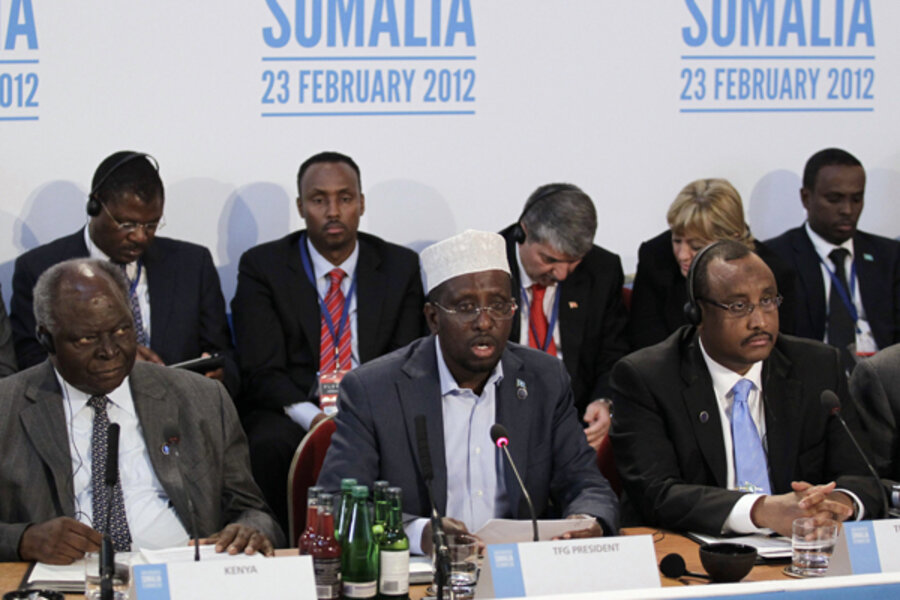Somalia: For once, some optimism
Loading...
Somalia hasn't had this much attention since the early 1990s.
At the United Nations, the Security Council voted to add an additional 5,700 peacekeepers to the African Union’s mission in Somalia (AMISOM). In London, a British-sponsored conference of world powers this week is debating just how to end the 20-year cycle of civil war in Somalia and to create a sustainable peace. Aid groups have launched massive ad campaigns to secure funds for what has been the worst famine in the Horn of Africa for some 20 years. And on the ground in Somalia itself, African Union peacekeepers and the armed forces of neighboring countries are pushing back an Al Qaeda-linked group, Al Shabab, that has dominated south-central Somalia for the past four years.
It's a major shift from 1992, when the US intervened in Somalia to secure food aid deliveries after a crushing civil war, and then promptly withdrew after finding themselves caught in the cross-fire between feuding warlords. Remember all those battle-scenes from the movie “Black Hawk Down?" US military planners sure do, and the following two decades of US foreign policy toward Somalia was marked mainly by neglect.
But in opening the London conference, British Prime Minister David Cameron called on the international community to abandon its past fatalism.
"That fatalism has failed Somalia. And it has failed the international community too. Today we have an unprecedented opportunity to change that," Reuters quoted Mr. Cameron as saying in his opening speech. "These problems in Somalia don't just affect Somalia. They affect us all. In a country where there is no hope, chaos, violence and terrorism thrive. Pirates are disrupting vital trade routes and kidnapping tourists."
In military terms, there are definite signs of progress. Pro-government troops have pushed Al Shabab into retreat. In humanitarian terms, the picture is more mixed. Aid supplies are flowing into areas taken away from Al Shabab, but fighting has sent tens of thousands of families from their homes, adding to an overall 1.5 million population of displaced Somalis.
AU forces under the African Union Mission in Somalia (AMISOM) have pushed Al Shabab forces out of Mogadishu entirely, allowing Somali citizens to return to their homes and allowing the government enough security within the city to start providing government services such as policing, schooling, and sanitation services that have been missing for decades.
In the south, Kenyan forces have shifted gears from a full-scale offensive against Al-Shabab positions – particularly its seaport headquarters in Kismayo – toward a more patient “pacification” or “hearts and minds” campaign to secure control over the areas they have already taken from Al Shabab. Kenyan forces entered Somalia on Oct. 16, 2011, after a spate of kidnappings and attacks on Kenyan commercial interests that Kenyan authorities blame on Al Shabab.
“We could move forward and capture towns and territory off Al-Shabab tomorrow, but what would happen?” says Kenyan Lt. Col. Jeff Nyagah, commander of this battle sector, quoted by Agence France Presse.
“Al-Shebab would mingle with the people and attack, so we are doing a pacification operation to ensure they don’t disrupt the gains we have made.”
But in the west, Ethiopian troops and troops loyal to the Somali transitional government have taken key towns of Beledweyne and also Somalia’s third-largest city, Baidoa. The Somali news service, Shabelle, reported today that a massive blast – possibly landmine booby-traps – shook Baidoa after Al Shabab retreated from the town. There have been no reports yet of casualties.







